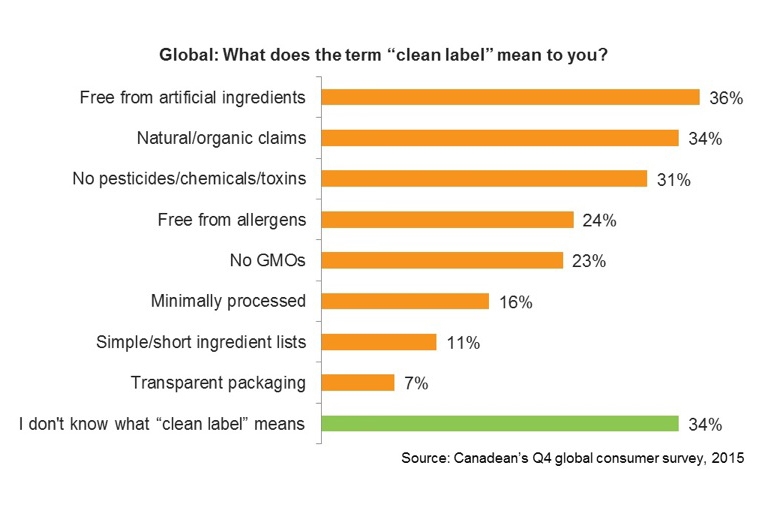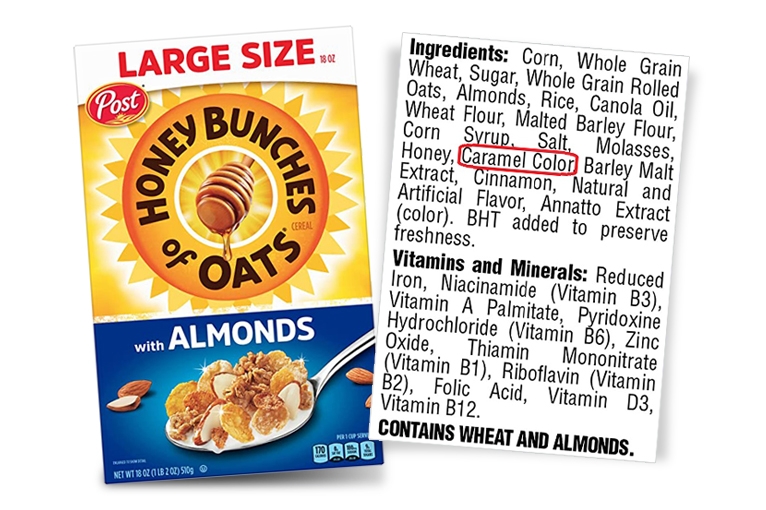
Clean labels
Foods claiming to have a "clean label" should be free of unsafe additives and ingredients, and from vague or misleading terminology that hides health risks or implies nonexistent health benefits.
Consumers have gotten the message: There are unsafe and poorly tested chemicals in everyday foods and beverages sold and served in supermarkets, corner shops, restaurants, and schools. As concern grows, shoppers are increasingly demanding foods and beverages that are free from concerning additives.
Companies have responded to these consumer demands by offering “clean label” foods. While there is no official definition of what “clean label” means, it generally refers to food and beverage products with short ingredient lists, familiar, natural sounding ingredients, and no artificial ingredients.
But here’s a dirty little secret about these “clean” labels: A shorter ingredient list doesn’t necessarily make a food healthier, and a chemical isn’t safer just because it’s “natural,” familiar, or easy to pronounce.
Clean label confusion
Because industry’s clean labels campaigns are not always centered around safety, consumers are confused about what “clean label” means. According to a 2015 consumer survey (shown in the bar graph below) when asked, “What does the term ‘clean label’ mean to you,” 34 percent responded, “I don’t know what ‘clean label’ means.” Among the respondents who claimed to understand the term “clean label,” opinions on the defining characteristics of clean label foods varied.

More than one in three respondents thought clean labels foods are those that are free from artificial ingredients or those that make natural or organic claims. Thirty percent thought it referred to foods free from pesticides, chemicals, or toxins. One in ten thought clean label foods had short, simple ingredient lists.
Industry has preyed upon misconceptions of food and chemical safety to sell “clean label” foods and beverages that are, in reality, no safer than standard foods and beverages. Unfortunately, rather than working to improve food safety, industry’s response to clean label demands prioritizes profit over public health. Their clean label marketing tactics only make their foods seem safer, while food companies do little to actually improve additive safety.
This needs to change.
CSPI is here to ensure that public health and scientific evidence, not industry’s profits, are the drivers behind clean label practices.

Safe or scary: judging additive safety on name alone
Deciphering an ingredient label can be daunting. Unless you have a knack for chemistry—or you’re a Chemical Cuisine pro—the list of additives and ingredients on the back of your food might as well be a foreign language. It is perhaps unsurprising then that people gravitate towards foods and beverages made with ingredients with simpler names. But name alone tells us little about additive safety.
Consider, for example, ascorbic acid and caramel coloring. Ascorbic acid is simply another name for vitamin C, a safe color additive, and can be produced synthetically, whereas the familiar-sounding caramel color(ing) is sometimes produced with ammonium compounds and tainted with cancer-causing impurities.
Contains caramel color. Photo: Amazon.com
Whether natural or synthetic, simple or complex, the only way to tell if a food additive is safe is for scientists to conduct rigorous testing. For help deciphering ingredient lists, turn to CSPI’s Chemical Cuisine, which rates additive safety based on the scientific evidence, and helps you ensure that the foods and beverages you buy are made with the safest ingredients and additives.
CSPI’s core principles for clean labels
CSPI is calling on companies to ensure their clean label commitments are grounded in science and protecting public health. To produce clean label foods with a focus on safety, manufacturers must follow science-based practices that:
- Produce foods and beverages free from unsafe additives (and additives that have not been adequately tested or otherwise demonstrated to be safe), whether natural or synthetic. When reformulating to eliminate unsafe additives, manufacturers must be particularly mindful to avoid regrettable substitutions (swapping in another additive that is also unsafe or that has not been adequately tested).

- Examples: aspartame, which has been linked to cancer, and synthetic dyes, which have been linked to adverse neurobehavioral outcomes (e.g., hyperactivity) in some children, don’t belong in our foods
- Avoid using vague terms to hide ingredients and additives. The ingredient label should transparently disclose all intentionally added substances.
Example: terms such as “natural flavoring” include an unnamed group of ingredients that can replace nutritious ingredients. This legally permitted practice enables companies to use the term “natural flavor(ing)” to hide ingredients that consumers might not recognize or want.

Avoid using misleading labeling terms to minimize consumer perceptions of harm.
- Examples: processed meat products labeled as “uncured” with “no nitrates or nitrites added” lead consumers to believe the product contains no nitrates and/or nitrities, even though these products use natural sources of nitrates and nitrites, like celery powder, to achieve the same effects. Processed meats containing nitrates or nitrites, regardless of the source, have been linked to cancer. CSPI previously petitioned USDA to crack down on this misleading labeling practice.
Make ingredient labels easy to find and read, going above and beyond the legal requirements to increase the prominence of ingredient labels.
- Example: manufacturers could make efforts to increase font size, avoid writing in all caps, and avoid placing ingredient labels behind folds or creases in food packaging.
CSPI’s clean label campaign
By establishing these core clean label principles, grounded in science and public health, CSPI strives to shift the focus of the clean label trend back to its core— protecting public health. CSPI will campaign to advance these principles, hold industry accountable for their promises and their misleading labeling practices, and ultimately eliminate unsafe food additives from all foods and beverages sold in the U.S.

